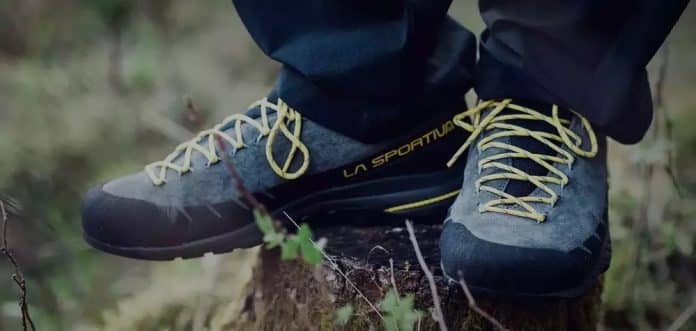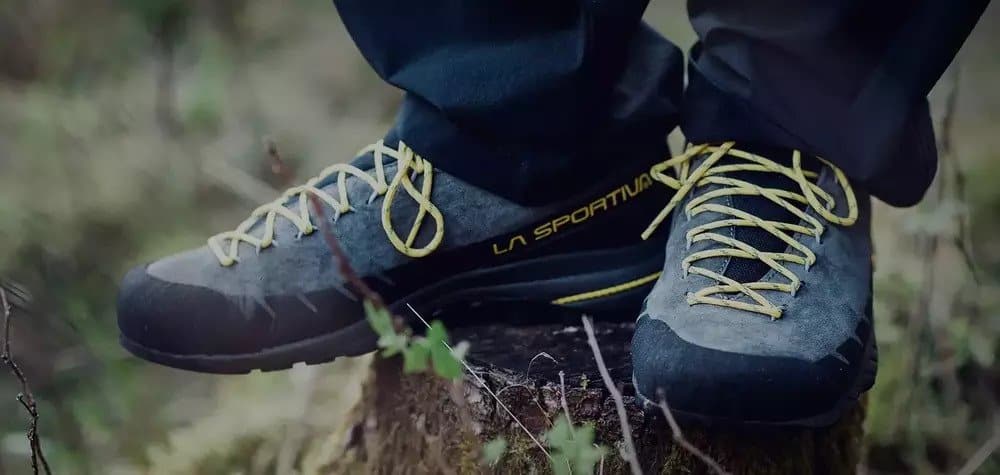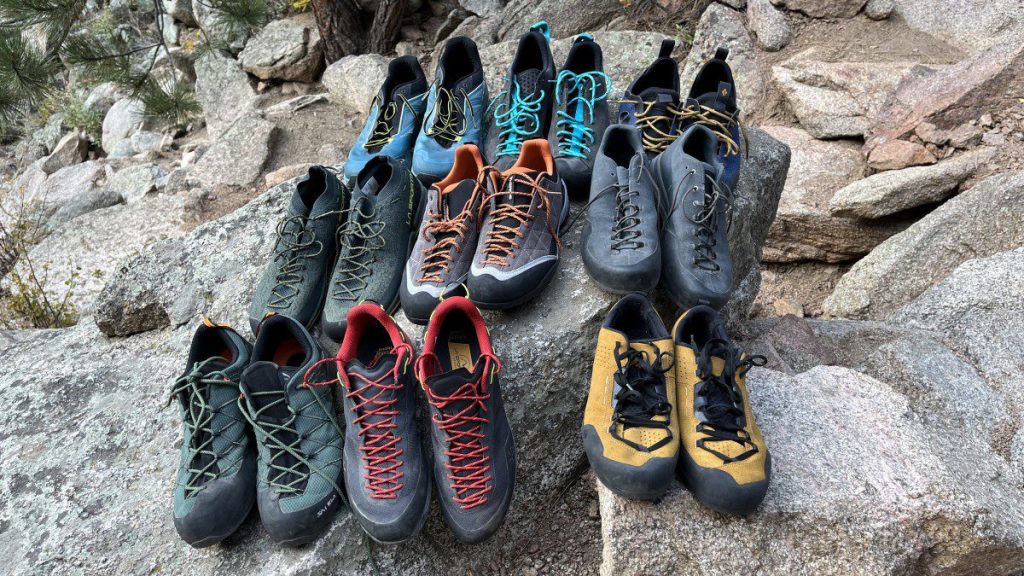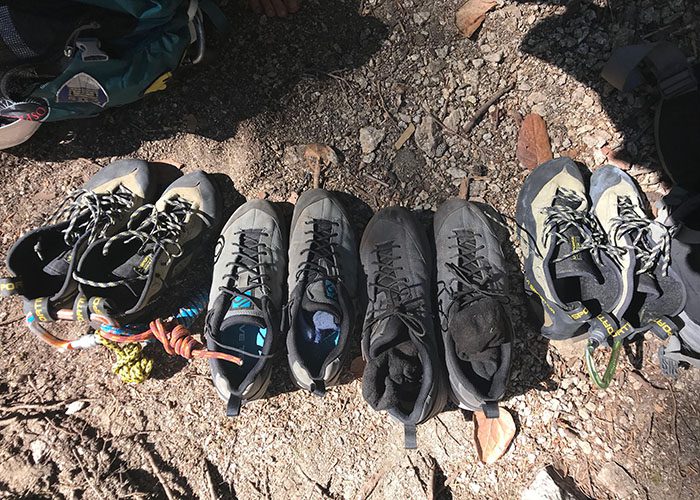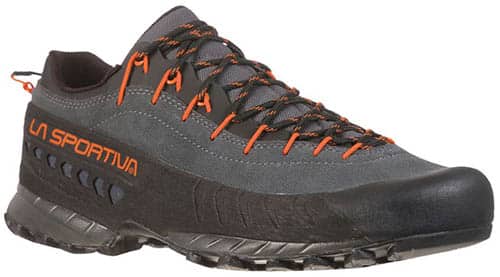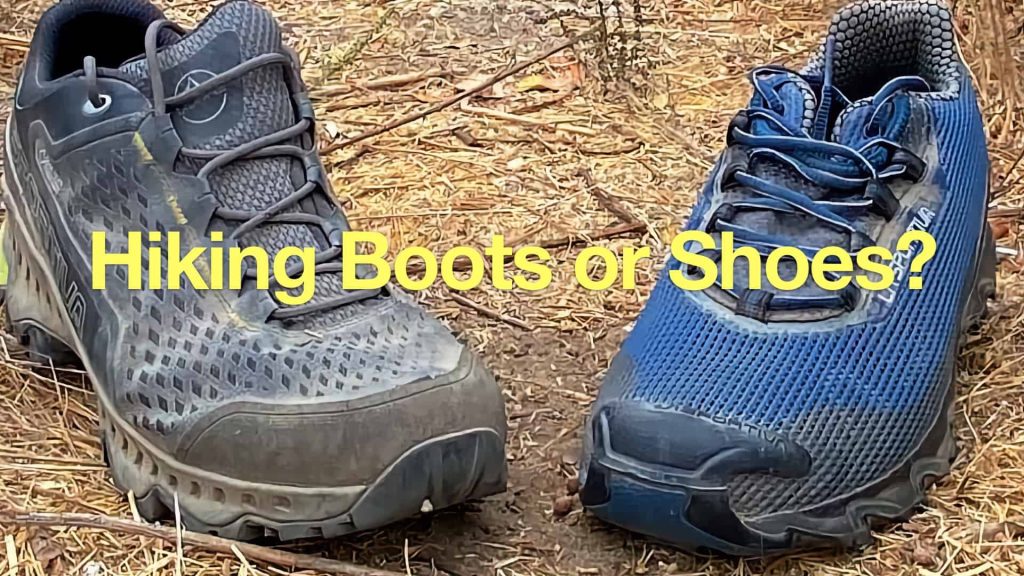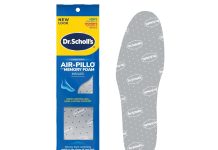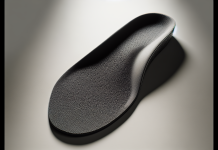Curious adventure seekers, listen up! We’re here to unravel the mystery behind the critical disparities between approach shoes and hiking shoes. Worry no more if you’ve ever found yourself standing in front of the shoe rack, contemplating which pair to choose for your next outdoor escapade.
We’re about to unveil each footwear’s distinctive features and purposes, allowing you to confidently select the perfect shoe for your next hiking or climbing expedition. So, lace up your boots and explore the remarkable dissimilarities between approach and hiking shoes.
Approach Shoes and Hiking Shoes are both types of footwear designed to provide comfort, protection, and support during outdoor activities. While they share some similarities, there are distinct differences that make each shoe ideal for specific purposes.
This article will explore these differences in construction, weight and flexibility, traction and grip, stability and support, versatility, durability, comfort and fit, breathability and waterproofing, and price range.
By understanding these variations, you can choose the right shoe for your intended use and make informed purchasing decisions.
Construction Differences
Upper Materials
Regarding upper materials, approach, and hiking shoes differ in construction. Approach shoes are often made with durable synthetic materials like polyester or nylon, providing breathability and some degree of water resistance. This allows for better moisture management during intense activities like hiking or climbing. On the other hand, hiking shoes are commonly constructed with a combination of leather and synthetic materials, providing a balance of durability and flexibility. The leather components offer enhanced protection against rough terrains and are often treated to ensure water resistance.
Toe Protection
Toe protection is essential in outdoor footwear, as it safeguards your toes from accidental bumps or impacts against rocks and obstacles. In this aspect, both approach and hiking shoes offer different levels of toe protection. Approach shoes typically have a lower-profile design with a rubber toe cap that provides moderate protection against light impacts. This design is ideal for technical climbing and scrambling activities where precision and sensitivity are crucial. In contrast, hiking shoes often feature a reinforced rubber toe cap that extends upward, providing excellent coverage and protection for your toes. This added protection is essential for hiking on rugged trails or uneven terrains.
Sole Construction
The construction of the sole plays a significant role in determining the performance and comfort of outdoor footwear. Approach shoes are typically designed with a sticky rubber sole that offers excellent grip on various surfaces, including rock faces.
This type of sole construction allows for better precision and control during technical climbing maneuvers. Additionally, approach shoes often have a thinner sole for better sensitivity, which is particularly important in climbing. On the other hand, hiking shoes are designed with thicker and more rigid soles. These soles provide better shock absorption and stability, ensuring comfort and support during long-distance hikes and uneven terrains.
Weight and Flexibility
Lightweight Design
Regarding weight, approach shoes are generally lighter than hiking shoes due to their specific design and intended use. The lightweight construction of approach shoes allows for enhanced mobility and agility while navigating technical terrains.
This makes them an excellent choice for climbers and individuals who prefer speed and maneuverability over heavy-duty support. On the other hand, hiking shoes tend to be heavier due to their construction and the need for additional cushioning and stability. This added weight provides better support and protection for your feet during long hikes or backpacking trips.
Flexibility
The flexibility of outdoor footwear is an important consideration, as it determines the range of motion in your feet and ankles. Approach shoes are designed to be more flexible, enabling climbers and hikers to perform precise footwork and maintain great control on technical surfaces.
The increased flexibility also allows for a more excellent range of motion, essential for climbers tackling challenging routes. On the contrary, hiking shoes are constructed with a balance of flexibility and stability. While they are more flexible than heavy-duty hiking boots, they offer enough rigidity to support your feet during long hikes and provide stability on uneven terrains.
This image is the property of www.climbingshoereview.com.
Traction and Grip
Rubber Compound
Traction and grip are crucial factors when considering outdoor footwear, as they determine how well your shoes grip various surfaces. Approach shoes are specifically designed with a sticky rubber compound, often made from climbing-specific rubber blends.
This type of rubber provides exceptional grip on rock surfaces and allows climbers to tackle technical moves with precision confidently. Hiking shoes typically use a different rubber compound that focuses on providing versatile traction across various terrains, including wet surfaces and loose trails. While not as sticky as climbing-specific rubber, hiking shoe soles are optimized for all-around performance in different outdoor conditions.
Lug Patterns
Lug patterns on the outsole of outdoor footwear are responsible for providing additional traction and grip on different surfaces. Approach shoes usually have a shallower lug pattern with smaller, more closely spaced lugs.
This design allows for better sensitivity and grip on rocky surfaces. The lack of deep lugs prevents excessive accumulation of dirt and debris, which can affect performance on technical climbs. In contrast, hiking shoes have deeper, widely spaced lugs to provide optimal traction on various terrains. The aggressive lug patterns bite into loose ground and muddy trails and provide reliable grip, ensuring stability and confidence during hiking adventures.
Stability and Support
Ankle Support
Ankle support is vital in outdoor footwear, especially when dealing with rugged terrains and uneven surfaces. Approach shoes are typically low-cut to allow for greater ankle mobility and flexibility. This design is favored by climbers who require precise footwork and a more excellent range of motion.
However, it reduces ankle support, which may be insufficient for individuals with weak ankles or those hiking on challenging trails. In contrast, hiking shoes often feature a higher cut that provides additional ankle support and protection. The increased height offers stability on uneven surfaces and helps prevent ankle rolls or sprains, making them more suitable for rugged trails and longer hikes.
Midsole Support
Midsole support is essential for maintaining comfort and preventing fatigue during outdoor activities. Approach shoes usually have minimal midsole cushioning for better sensitivity and foot placement on technical climbs.
This lack of cushioning ensures a closer connection between your feet and the terrain, providing better climbing precision. On the other hand, Hiking shoes have thicker and more substantial midsoles that offer enhanced cushioning and shock absorption. This extra padding helps to alleviate the impact on your feet during long hikes or backpacking trips, reducing fatigue and increasing overall comfort.
This image is the property of u7q2x7c9.stackpathcdn.com.
Versatility
Intended Use
Both approach and hiking shoes have specific intended uses, determining their versatility within different outdoor activities. Approach shoes are designed primarily for rock climbing and technical approaches. They excel in providing the necessary grip, sensitivity, and precision required for tackling challenging routes. However, their specialized design makes them less versatile for outdoor activities, such as long hikes or backpacking trips. On the other hand, hiking shoes are built explicitly for hiking, trekking, and general outdoor adventures. Their versatile design allows them to perform well in various terrains and conditions, making them suitable for various activities.
All-Terrain Performance
Regarding performance across different terrains, approaches, and h, hiking shoes offer different levels of functionality. Approach shoes excel in rocky and technical terrains, providing the grip and precision required for climbing. They allow for confident footwork on rugged surfaces, ensuring traction and control even in challenging situations.
However, approach shoes may not perform as well on loose or soft ground, as their stickier rubber compound is optimized for rock surfaces. Hiking shoes, on the other hand, are designed to handle a variety of terrains, including loose trails, muddy paths, and even some rocky surfaces. Their versatile lug patterns and durable construction provide reliable grip and stability across different terrains, making them suitable for various outdoor activities.
Durability
Reinforcements
Durability is an essential factor when considering outdoor footwear, as it determines the longevity of your investment. Approach shoes are engineered with specific reinforcements to withstand the demands of climbing and scrambling. These include reinforced rubber toe caps and additional rubber overlays in high-wear areas.
These reinforcements protect the shoe from abrasions and extend its lifespan despite constant contact with rough rocks and surfaces. Hiking shoes also feature similar reinforcements, including durable toe caps and protective overlays. However, their overall construction tends to be sturdier, often incorporating additional elements, such as leather, to increase durability and resist demanding outdoor conditions.
Longevity
The longevity of outdoor footwear is influenced by various factors, including the materials used, construction quality, and the care you provide. Despite their lightweight and sensitive design, approach shoes are known for their excellent durability. Using durable synthetic materials and specialized reinforcements ensures they can withstand rugged rocky terrains and last for a significant period.
Hiking shoes, known for their sturdier construction and more robust materials, offer extended longevity. With proper care and maintenance, hiking shoes can endure prolonged use, including long hikes in demanding outdoor conditions. Regular cleaning, storage in a dry environment, and occasional waterproofing treatments can help prolong the lifespan of both types of shoes.
This image is the property of nextadventure.net.
Comfort and Fit
Cushioning
Comfort is paramount when selecting outdoor footwear, as it directly affects your overall hiking or climbing experience. Approach shoes offer a different level of comfort than hiking shoes, primarily due to their minimal midsole cushioning. The reduced padding allows for better sensitivity and foot placement on technical surfaces, providing a closer connection to the terrain.
However, this lack of cushioning may result in a less comfortable experience during extended hikes or when encountering rough terrains. Hiking shoes, designed for prolonged comfort, incorporate thicker midsoles with generous cushioning. This padding helps absorb impact and alleviate foot fatigue, ensuring a more comfortable experience during long-distance hikes or backpacking trips.
Fit
Proper fit is crucial for outdoor footwear, as an ill-fitting shoe can lead to discomfort, blisters, and even injuries. Approach shoes are typically designed with a snugger fit, ensuring a secure connection between your feet and the shoe. This close-fit design is essential for climbers, allowing for precise footwork and better control of technical climbs.
However, individuals with wider feet may find approach shoes too constricting, leading to discomfort or pressure points. On the other hand, hiking shoes often feature a more relaxed fit with extra room in the toe box. This design is favored by hikers who require more comfort and flexibility during long walks, accommodating natural foot swelling and preventing discomfort or pain.
Breathability and Waterproofing
Breathable Design
Breathability is a crucial feature in outdoor footwear, as it determines how well your shoes can evacuate moisture and heat from your feet. Approach shoes often prioritize breathability, as they are specifically designed for intense activities like climbing. Using synthetic materials and mesh panels allows for better airflow, preventing excessive sweating and reducing the risk of blisters or discomfort.
Hiking shoes also feature breathable designs, combining mesh panels and strategic ventilation. These features help regulate temperature and keep your feet dry during extended hikes or warm weather conditions, ensuring comfort and preventing fungal infections caused by excessive moisture.
Water Repellency
Waterproofing is essential when choosing outdoor footwear, mainly if you frequently hike in wet or rainy conditions. Approach shoes, given their focus on climbing and technical approaches, often prioritize breathability over complete waterproofing.
While some approach shoes may offer water-resistant properties to handle light moisture, they are generally not designed to withstand prolonged exposure to wet conditions. On the other hand, Hiking shoes often incorporate waterproof membranes like Gore-Tex® to provide reliable protection against water and moisture. This ensures your feet remain dry and comfortable, even during extended hikes in wet or rainy environments.
This image is the property of www.switchbacktravel.com.
Price Range
Affordability
Price is an influential factor for many individuals when considering outdoor footwear, as it impacts the accessibility and value of your purchase. Approach shoes typically fall into a higher price range due to their specialized construction, materials, and focus on technical climbing performance. Using climbing-specific rubber compounds, reinforced toe caps, and other technical features contributes to their higher price point.
Hiking shoes, designed for broader outdoor activities and with less specialized features, generally fall into a more affordable price range. While premium hiking shoes with advanced technologies may still have a higher price, plenty of budget-friendly options are available, ensuring accessibility to individuals with varying budgets.
Cost Considerations
When evaluating the cost of outdoor footwear, it is essential to consider your investment’s overall value and longevity. Approach shoes, despite their higher initial price, often offer excellent value due to their durability and performance in technical climbing.
Their ability to withstand constant contact with rough surfaces and provide reliable traction makes them a worthwhile investment for climbers. Hiking shoes, with their versatility and more affordable price range, provide excellent value for individuals who engage in various outdoor activities. Many hiking shoes’ extended longevity and durability ensure that your investment will be worthwhile in the long run.
Conclusion
Approach shoes and hiking shoes are valuable pieces of outdoor footwear designed to cater to the specific needs of climbers, hikers, and outdoor enthusiasts. By understanding the various construction differences, weight and flexibility variations, traction and grip features, stability and support aspects, versatility levels, durability factors, comfort and fit considerations, breathability and waterproofing properties, as well as the price range, you can make an informed decision when choosing the proper footwear for your outdoor adventures.
Whether scaling rocky cliffs, trekking through challenging terrains, or embarking on long hikes, selecting the appropriate shoe will ensure a comfortable, safe, and enjoyable experience.
This image is the property of hikingguy.com.

